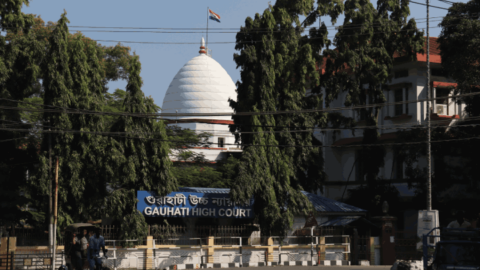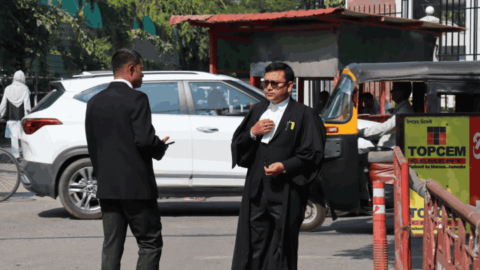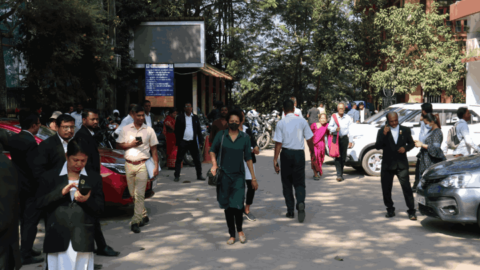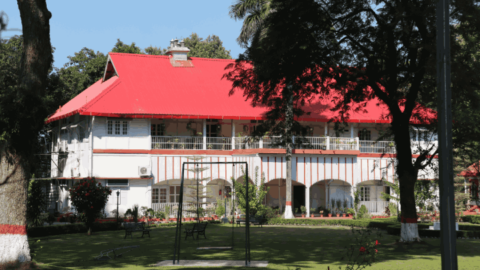“In India, We’re All Advocates”: Photographs of the Legal System in Guwahati, Assam

Lawyers are called ‘advocates’ in India, they’re called ‘attorneys’ in the US, and so-called ‘solicitors’ in Australia are now in the courts daily, so why does there remain a distinction between ‘solicitors’ and ‘barristers’.
Sydney Criminal Lawyers bumped into a lawyer on MG Road in Guwahati, the capital of the Indian state of Assam, as he was making his way down towards the High Court. It was obvious he was a lawyer, as he was dressed in a black suit and white shirt like so many others in the vicinity.
On being asked if that was the requirement, he explained that lawyers do need to dress in such attire in India, as well as wear a white band around their neck that leads to two strips of cloth hanging below. These were adopted from British barristers back in the day.
These bands, however, don’t signify that the legal professional in question is a barrister, he told me, as, according to the young lawyer, in India the profession tends not to make the distinction between barristers and solicitors, instead everyone is referred to as an advocate.
The Indian legal system is largely based on British common law, which it inherited during colonisation. However, over more recent years, it’s been further influenced by European systems and that of the United States, and it also incorporates some religious dictates as well.
Solicitors and barristers in Australia
Decades ago in Australia, there was indeed a distinction between solicitors and barristers.
Solicitors would solicit (obtain) legal cases and then refer them to a courtroom lawyer with a wig and a gown, known as a ‘barrister’.
Indeed, these so-called ‘solicitors’ would need to seek leave (permission) in court in order to represent clients inside the courtroom.
But in 1986, this all changed. Since that time, more than three decades ago, many so-called solicitors attend court every day, and have many years of courtroom experience in serious and complex cases.
Some so-called solicitors have become what are known as ‘trial advocates’ (criminal defence lawyers for District and Supreme Court trials) and go directly from that role to be appointed as District Court judges.
In fact, a person can undertake the bar course and become a barrister, with little actual courtroom experience, or experience in the law for that matter. That said there are, of course, many extremely experienced barristers who are experts inside the courtroom, especially when it comes to jury trials.
The Supreme Court of New South Wales and Law Society of New South Wales have both recognised the artificiality of the outdated distinction between solicitors and barristers, with the former now calling those newly admitted as ‘lawyers’ (previously known as ‘solicitors’ or ‘legal practitioners’) and the latter authorising the following formal designations for all who are admitted as lawyers: ‘barrister’, ‘counsel’, ‘barrister and solicitor’, ‘solicitor and barrister, ‘solicitor’, ‘attorney’, ‘proctor’ – it’s all very mixed up and confusing.
So, it’s interesting that the legal profession in Australia holds so steadfastly on to certain centuries-old traditions of questionable relevance to modern times – from barristers ‘at the bar’ and judges having to wear antiquated wigs and gowns in the higher courts, to a range of formalities upon entering and inside the courtroom.
Perhaps it’s time, like many other jurisdictions, to adopt the title of ‘lawyers’ to all legal practitioners, and do away with many of the formalities in the legal system – from the use of pompous legalese which acts as a barrister to justice, to wearing antiquated outfits, to bowing and using unnecessary titles and time-wasting formal phrases inside the courtroom.
In any event, here are a few images taken on the ground of advocates in India’s British common law-derived legal profession.



















